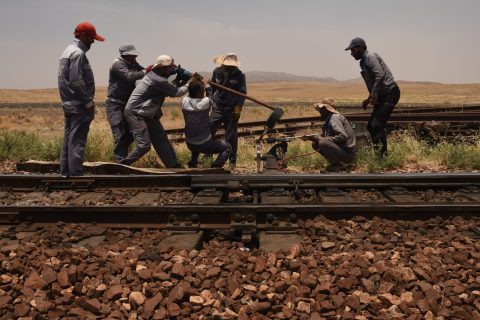Can Turkey become China’s Eurasian game changer?

Closer trade relations with Turkey and its better integration within the Belt and Road Initiative seem to be in China’s immediate plans. The 3rd China-Turkey Communication Forum held on 26 September brought up some interesting perspectives that aspire to see the Middle Corridor becoming more integral along the Silk Road.
During the forum, Chinese and Turkish officials and researchers discussed several economic and trade cooperation points between the two countries. The highlights concerned the need for Turkey to increase its eastbound trade and volumes, closer cooperation in the context of BRI, and better integration of the Middle Corridor in the Chinese mega-project.
Additionally, on the forum’s sidelines, the two sides exchanged some views with a particular geopolitical interest, which could indicate the position China designs for Turkey in what seems to become a new sphere of influence, including Russia.
More eastbound volumes
This was the second meeting between representatives of the two countries in just a few weeks. Some days earlier, Chinese President Xi and Turkish President Erdogan met in Uzbekistan during the Shanghai Cooperation Organisation (SCO) summit, where they agreed to boost bilateral trade and investments.
During the latest meeting, Turkey’s deputy minister of commerce, Mustafa Tuzcu, highlighted that the impressive growth of trade and transport between the two countries is the basis for building more and closer ties. However, Cheng Weihua, Chargé d’Affaires ad Interim of the Chinese Embassy in Turkey, stressed that for this to happen, Turkey should take measures to increase its eastbound volumes to China. He also appeared confident that a specific solution could be in place to achieve this goal.
Also read: New four-country partnership brings the Middle Corridor to Europe
BRI and Middle Corridor alignment
Regarding solutions, Cheng stressed that to unleash the two countries’ potential; there should be a better alignment between the BRI and the Middle Corridor. Specifically, he said that Turkey’s geographic advantage in connecting Eurasia should come into full play and facilitate the product flow from sectors like the digital economy, new energy, and hi-tech.
This statement, combined with China’s intention to bring new energy vehicles on Eurasian trains, could mean that we could see more e-commerce and automotive cargo transiting through Turkey to Europe.
Also read: Hupac and Rail Cargo Group see Turkey as the future rail market
Turkey’s Middle Corridor?
The association between Turkey and the Middle Corridor was an intriguing point of the bilateral meeting. Both sides kept mentioning that BRI and the Middle Corridor share the same principles, making them valuable to each other. Apart from the fact that the two projects were presented as two different and distinct entities that need to integrate more, the Middle Corridor was continuously mentioned as ‘Turkey’s project’.
This figure of speech did not intend to undermine the significance of other countries belonging to the route. In contrast, it underlined Turkey’s growing importance in the corridor and China’s determination to invest in it more, and why not turn it into one of the main gateways for Eurasian traffic.
Moreover, Mustafa Tuzcu stated that the China-Turkey cooperation and growing trade is a decisive step against protectionism. By protectionism, Tuzcu implied the reinforced EU and US policy against Russia through sanctions. His perspective, shared by both sides, could signal a new era of Eurasian trade and a new approach for the BRI, focusing mainly on a sphere of influence including Russia, China and Turkey, using Central Asia as a platform for Eurasian transport and Turkey as its gateway.
You just read one of our premium articles free of charge
Want full access? Take advantage of our exclusive offer





